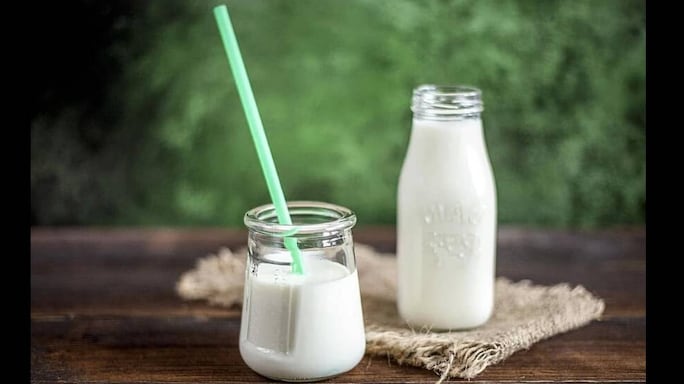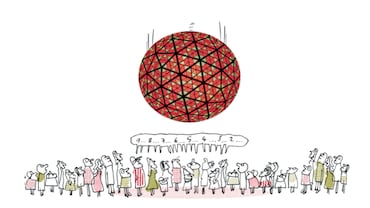- HOME
- /
- Odds and Ends
- /
On World Milk Day, 10 Interesting Facts About The Dairy Product We Think We Know Well
Some love it, while others hate it, but there’s no way you can ignore milk
 Pikist
Pikist
1. Why is World Milk Day celebrated on 1 June, you may ask. The Food and Agriculture Organization (FAO) of the United Nations says the date was chosen because many countries were already celebrating their national milk days around this time of the year. Initially, a date in late May was proposed, but some countries like China already had a lot of events scheduled during that time. Finally, 1 June was zeroed in for the celebration. Some countries celebrate the World Milk Day a week before or after this date as well.
2. The history of cow’s milk goes back to 10,000 BC when nomadic tribes decided to settle down, start farming and domesticate animals. In ancient Egypt, it is believed, milk was available only to the royalty, priests and the uber-rich. In fact, until the 17th century, milk was not even a preferred choice of beverage in European countries--ale and beer were far more popular.
3. By the 19th century, milk started becoming popular in Europe and the US, but only for children. It was not until Louis Pasteur invented pasteurization, making milk a safe drink for many, that the beverage really took off. According to an article in Smithsonian magazine, then US President Theodore Roosevelt’s Surgeon General released a 600-page report in 1908 that “attributed most childhood deaths to impure milk and argued that pasteurization was the best way to address the ongoing public health crisis”.
4. A 250 ml glass of milk, says FAO, can provide a 5- or 6-year-old 48 per cent of their dietary protein requirement, 9 per cent of calories and key micro-nutrients like calcium, magnesium, selenium and B vitamins.
5. While milk is recommended for children, we are not sure if adults need to have it too. Vasanti Malik, Adjunct Assistant Professor of Nutrition at the Harvard T.H. Chan School of Public Health, says adults can get nutrients like calcium and protein from other sources in their diet too. “There’s really not a reason to consume milk unless you like it,” she tells USA Today in a 2019 article, and adds that even if you want to continue drinking milk, you can opt for low or non-fat milk as against the full-cream version.
6. Of late, several concerns have been raised about animal milk, with many asking if we are, at all, supposed to have animal milk in the first place. As babies, our bodies are able to make a special enzyme called lactase to digest lactose found in mother’s milk. Once we are weaned, this function stops. This also explains why many of us experience flatulence and stomach aches after having milk. Adult mammals, including dogs and cats, don’t produce lactase. However, experts now say that with evolution, lactase-persistence has kicked in many adults, allowing them to drink the beverage without the side-effects. Yet, at the same time, there are still many, especially in Asia and Africa, who have not developed lactase-persistence. Add to this the concerns about contamination, particularly in unhygienic settings of milking cows and handling the dairy product in India. Moreover, the presence of antibiotics and hormones in milk, from injected cows, for increased production and disease containment, have been an additional area of worry.
7. Did you know that India is the largest producer of milk and accounts for 22 per cent of global milk production? It is followed by the US, China, Pakistan and Brazil.
8. According to the FAO, milk production has seen the maximum growth in South Asia since the1970s. India’s National Dairy Development Board was also set up around the same time, in 1965, at Gujarat’s Anand, with Dr. Verghese Kurien as its first chairman. Lal Bahadur Shastri, then Prime Minister of India, during a visit to an Amul factory in October 1964 was highly impressed by the dairy cooperative’s way of functioning and wanted the model to be replicated across the country. Five years later, India launched Operation Flood in July 1970 to lay the foundation for viable national dairy industry.
9. But if you are thinking Gujarat is the highest milk producer in the country, you are wrong. According to Statista, in the financial year 2019, Uttar Pradesh, Rajasthan, Madhya Pradesh and Andhra Pradesh were the top milk producers, followed by Gujarat at number 5. UP alone produced 30.5 million metric tonnes of milk, while India’s total milk production stood at 187 million metric tonnes.
10. In India, the dairy movement is closely tied to women’s empowerment. While women have always played an integral role in dairying by feeding and taking care of the cattle, the Women Dairy Cooperative Leadership Programme was launched on a pilot basis in 1995 in Valsad, Kolhapur, Wayanad and Goa to bring women to the forefront. India, as per the National Dairy Development Board, now has 43.80 lakh women dairy producers.






